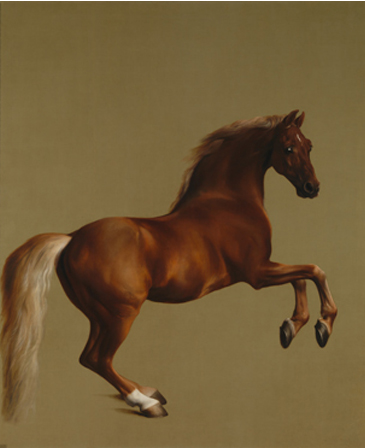'Whistlejacket' is a feast for the eyes, writes Andrew Graham- Dixon
The most powerful and valuable thoroughbred in Britain will not be going into the stalls for today's Derby at Epsom. Instead, he will be found rearing up on his hind quarters in Room 34 of the National Gallery.
The name of the riderless horse with the untameable look in his eye is Whistlejacket. He was sired by Mogul, the Godolphin Arabian, out of a mare by Sweepstakes; he was owned by the Second Marquess of Rockingham, for whom he won a small fortune in prize money; and he was made immortal by George Stubbs.
Whistlejacket was painted in 1767 for 40 guineas. Worth rather more than that these days, the picture is one of the masterpieces not merely of British art but of world painting. Its arrival at the National Gallery - placed there on indefinite loan by a descendant of the aristocrat who commissioned it - constitutes one of the most thrilling additions to the public art of this country.
There was palpable excitement inside the museum as the huge work was hoisted on to the wall by two muscular but infinitely gentle picture-handlers wearing white gloves. As the great pictures always do, Whis-tlejacket immediately made its presence felt on the other works around it.
Hung alongside a line of elegant Grand Manner Augustan portraits - including Sir Joshua Reynolds' por-trait of Lord Heathfield, Governor of Gibraltar, and Thomas Gainsborough's portrait of Mr and Mrs Hallett, otherwise known as The Morning Walk - this great brute of a work muscled in in no uncertain terms.
Its almost intimidating effect was summed up by one of the first members of the public to see it in its new setting. A 10-year-old boy bounced into the room, looked up at...


